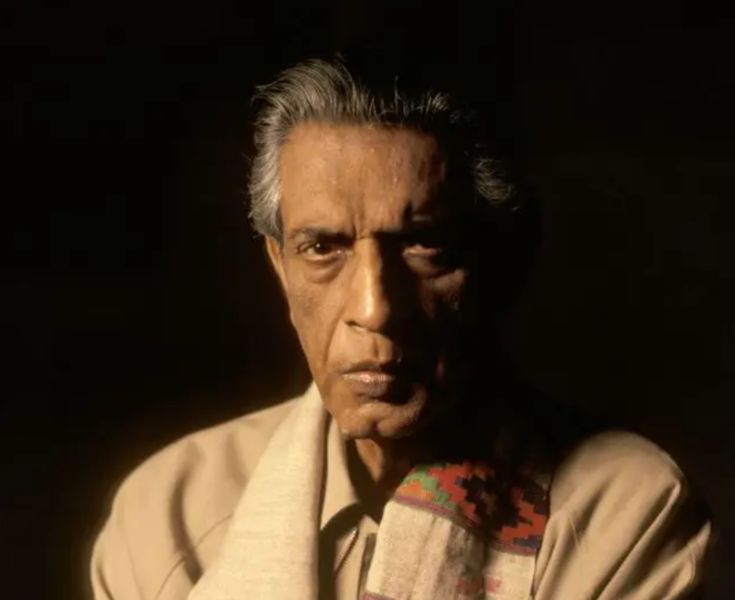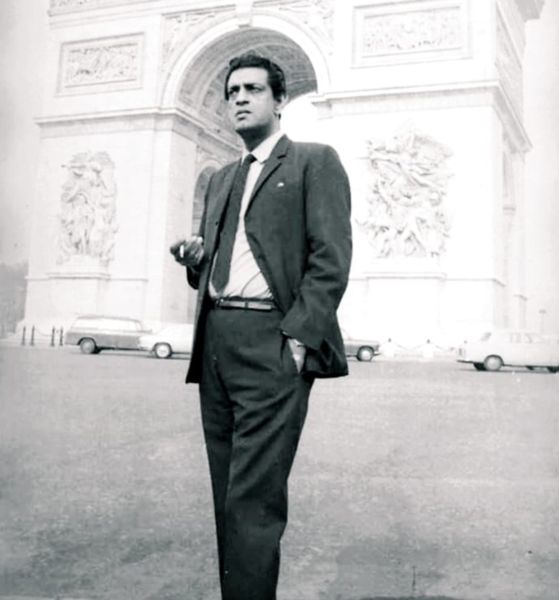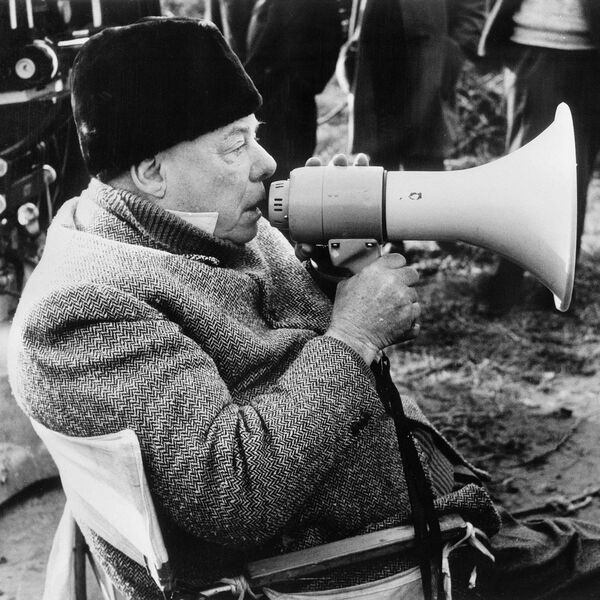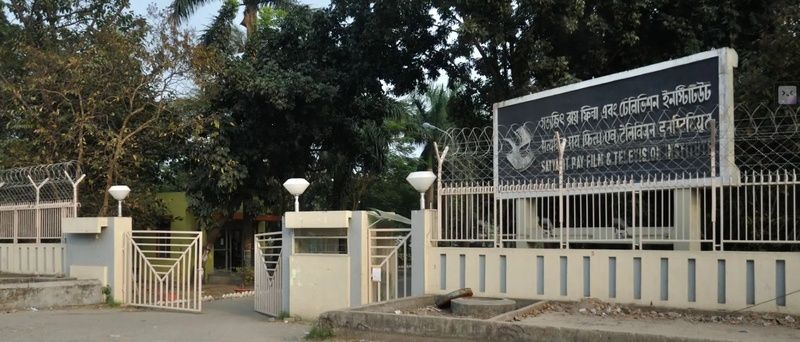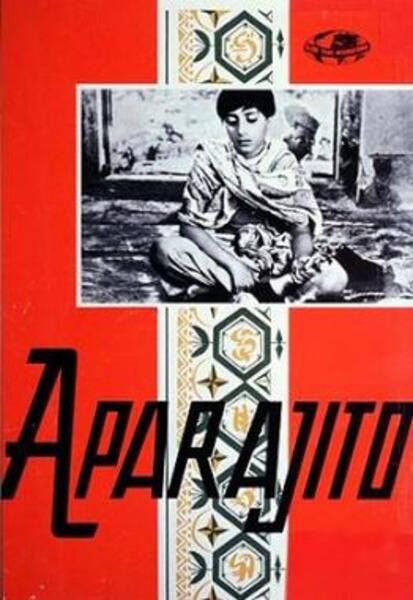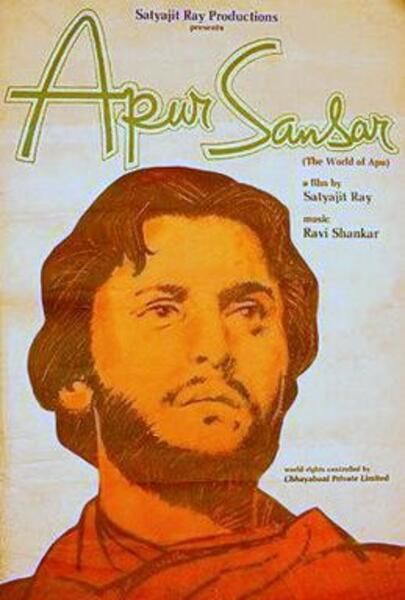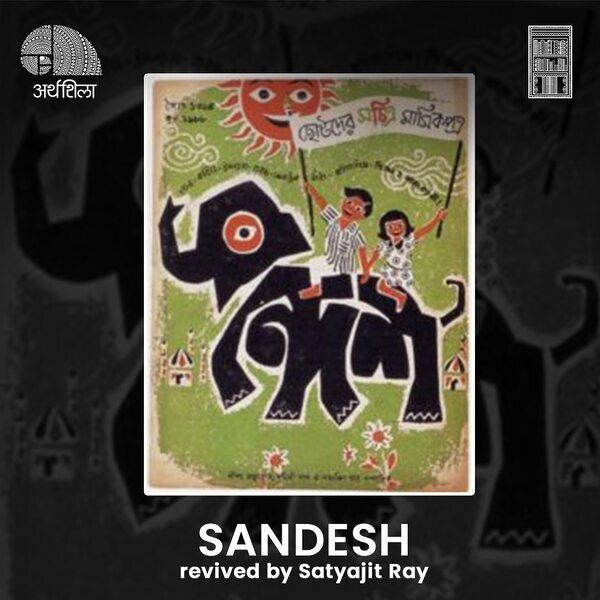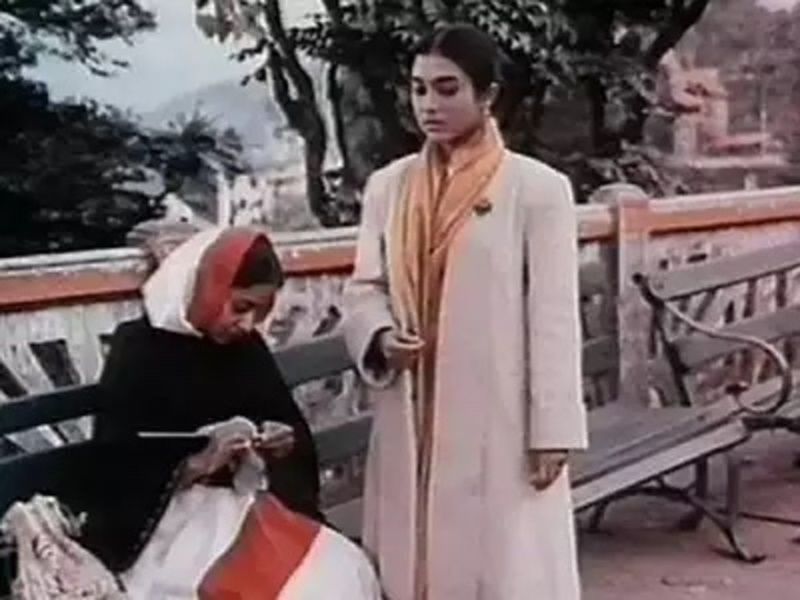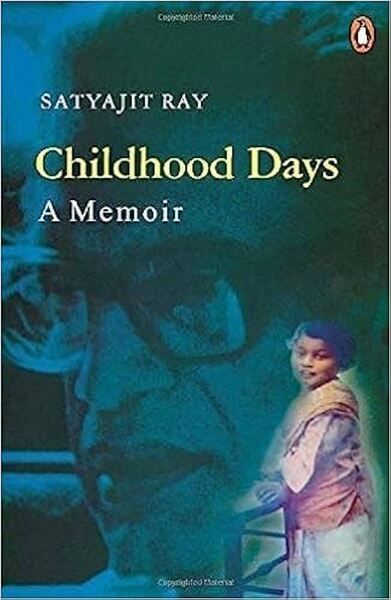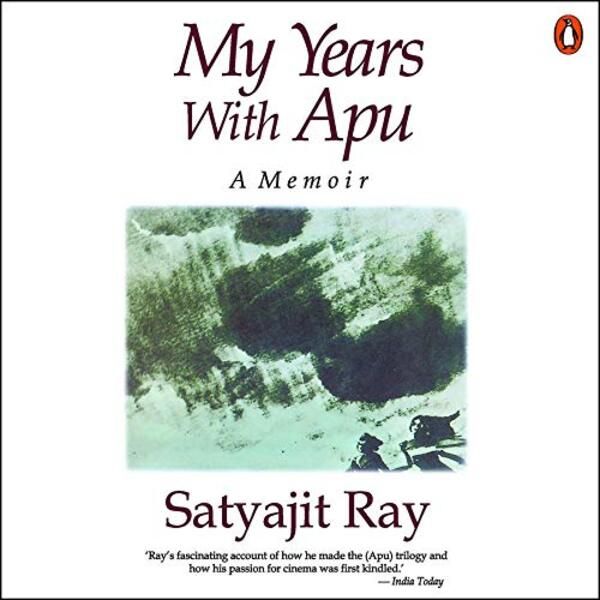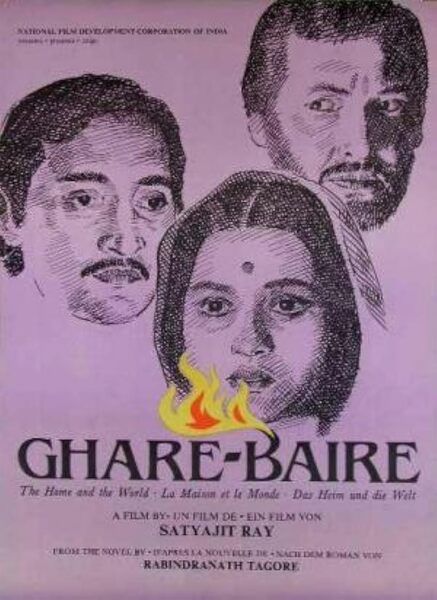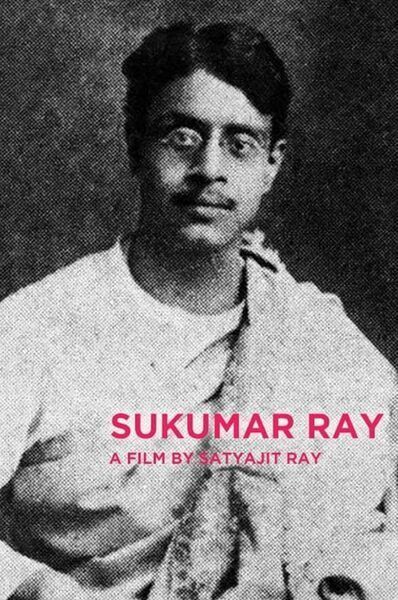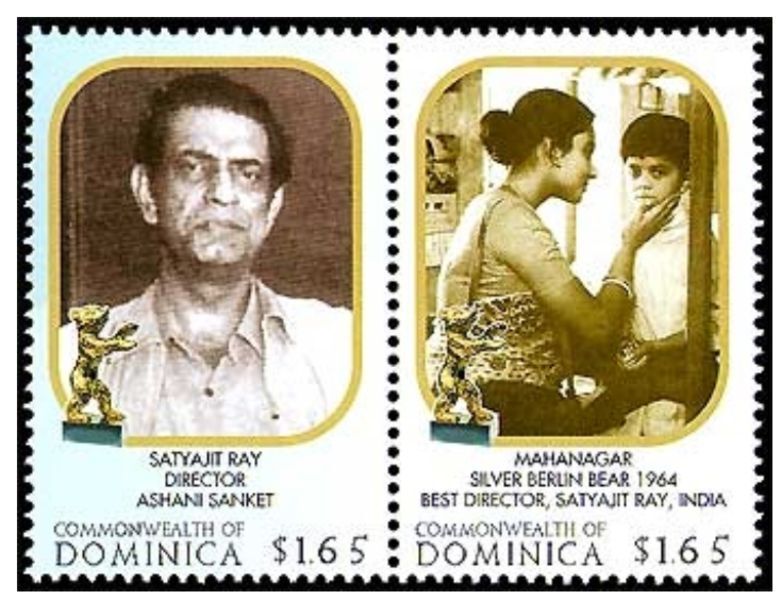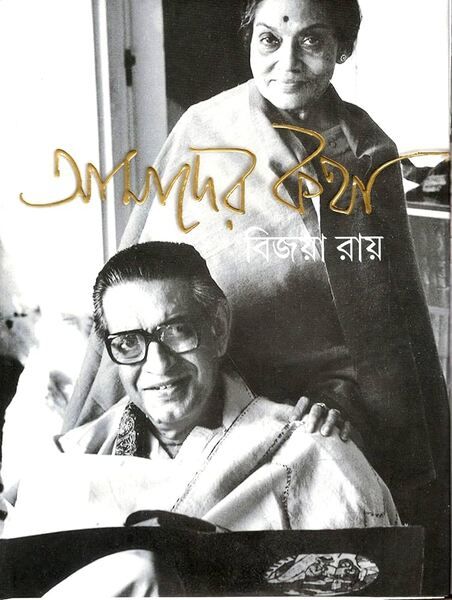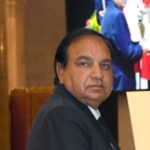Satyajit Ray Age, Death, Wife, Children, Family, Biography & More
| Bio/Wiki | |
|---|---|
| Nickname | Manik [1]Suprabha Ray - A Biographical Sketch |
| Profession(s) | • Indian Director • Producer • Screenwriter • Composer • Writer • Graphic Designer |
| Career | |
| Debut | Film: ‘The Apu Trilogy’ (1955) |
| Last Film | ‘Agantuk’ (1991) |
| Awards, Honours, Achievements | International Awards • 1957: Selznik Golden Laurel, Berlin for the film, ‘Pather Panchali’ • 1979: Best Feature Film, Hong Kong Film Festival for the film, ‘Joi Baba Felunath (The Elephant God)’ (1978) • 1980: Wington Award for each film, London Festival, for the film ‘Apu Trilogy’ Indian Awards • 1958: Padma Shri • 1965: Padma Bhushan • 1985: Dadasaheb Phalke Award • 1992: Bharat Ratna Honours • 1974: Doctorate in Literature by the Royal College of Arts, London • 1978: Honorary degree from Oxford University • 1979: Honorable Prize for the contribution to cinema at the 11th Moscow International Film Festival • 1992: Honorary Award for Lifetime Achievement at the 64th Academy Awards by the Academy of Motion Picture Arts and Sciences (Oscars) |
| Personal Life | |
| Date of Birth | 2 May 1921 (Monday) |
| Birthplace | Kolkata, West Bengal |
| Date of Death | 23 April 1992 |
| Place of Death | Kolkata, West Bengal |
| Age (at the time of death) | 70 Years |
| Death Cause | Heart and lung ailments [2]The Washington Post |
| Zodiac sign | Taurus |
| Signature | 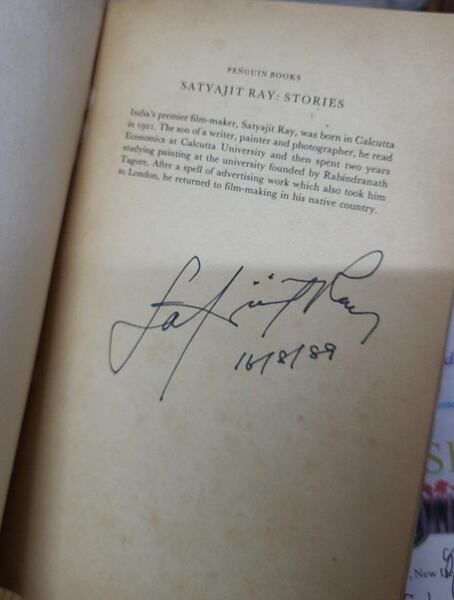 |
| Nationality | Indian |
| Hometown | Kolkata |
| School | Ballygunge Government High School |
| College/University | • The Presidency College, Calcutta • Visva-Bharati University |
| Educational Qualification | • Bachelor of Arts in Economics Honours [3]Satyajit Ray Organization • Fine Arts [4]Satyajit Ray Organization |
| Religious Views | Satyajit Ray was an atheist. [5]India Today |
| Controversy | In 1960, during the promotions of the film titled ‘Devi,’ Satyajit Ray talked about how the film was all about highlighting the religious narrow-mindedness. The general public slammed him for not being a Hindu and making such films against Hinduism. Satyajit was quoted saying in an interview "This happens in India all the time. We have a fairly backward audience here." [6]The Times of India |
| Relationships & More | |
| Marital Status (at the time of death) | Married |
| Marriage Date | 20 October 1948 |
| Family | |
| Wife/Spouse | Bijoya Ray (Deceased) (Bengali actress and playback singer)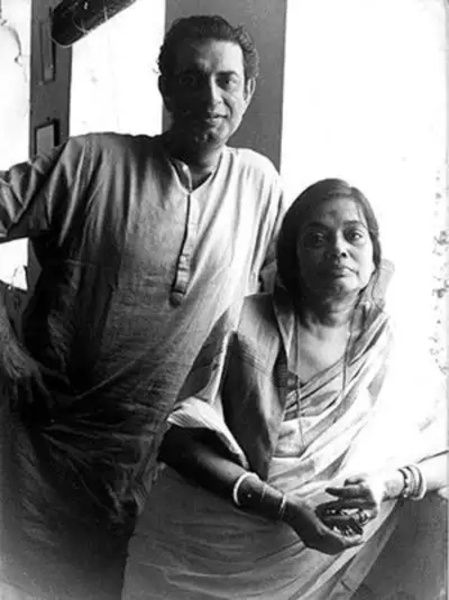 |
| Children | Son- Sandip Ray (Bengali film and music director)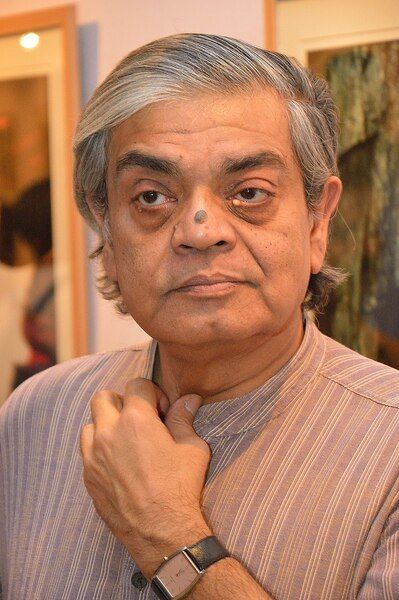 |
| Parents | Father- Sukumar Ray (Deceased) (Bengali writer and poet) Mother- Suprabha Ray (Deceased) (Singer) 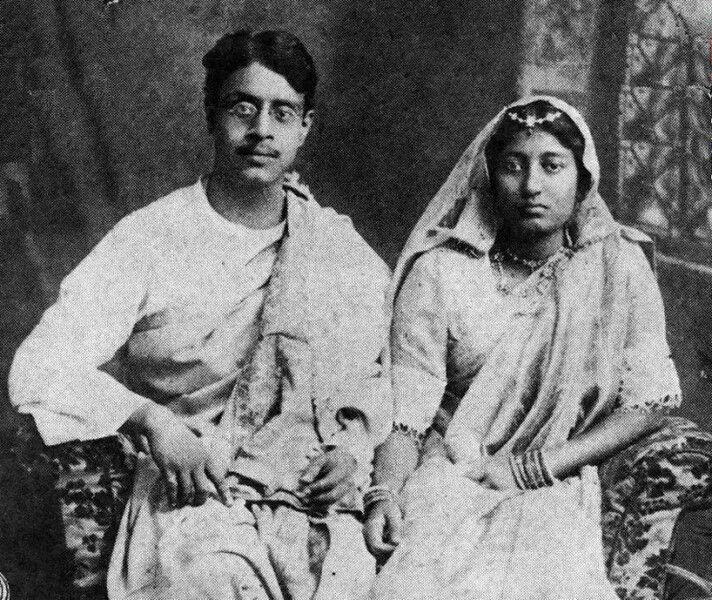 |
| Other Relatives | • Bengali writer, painter, and entrepreneur Upendrakishore Ray Chowdhury was Satyajit Ray’s paternal grandfather. [7]Speaking Tiger Books • Indian freedom fighter Deshbandhu was Satyajit Ray’s wife’s uncle. [8]Confluence • Bengali singer Sati Devi was Satyajit's sister-in-law. [9]Nupur De Roy Music - Facebook • Indian actress, singer, and Kishore Kumar's first wife Ruma Guha Thakurta was Satyajit's niece. [10]The Times of India • Satyajit’s mother, Suprabha Ray, was the granddaughter of philanthropic zamindar Kali Narayan Gupta. [11]The Daily Star |
| Favourites | |
| Film Director | Jean Renoir |
| Actor(s) | Naseeruddin Shah, Nana Patekar |
| Musician | Beethoven |
Some Lesser Known Facts About Satyajit Ray
- In 1942, Satyajit Ray dropped his fine arts course in mid-year at the Visva-Bharati University, Santiniketan, West Bengal as he lost interest in the course and it was the same day when Calcutta was bombed by the Japanese for the first time.
- Satyajit Ray’s ancestors belonged to the Chakdah village in the Nadia district of present-day West Bengal and migrated to Sherpur in East Bengal.
- It was Rabindranath Tagore who wanted Satyajit Ray to join the Visva-Bharati University, Santiniketan as Tagore was a close friend of Satyajit’s grandfather.
- During the first half of the 18th century, his ancestors migrated to the village Masua in Katiadi Upazila of Kishoreganj district.
- Satyajit’s ancestors were Bengali Kayasthas (a Hindu caste of Bengal) who later adopted the name ‘Ray’ since the Rays were ‘Vaishnavas’ who were known as the Lord Vishnu worshippers.
- Satyajit Ray’s father, a Bengali writer and poet Sukumar Ray passed away on 10 September 1923 after suffering from black fever. Satyajit was only 2 years old at the time of his father’s passing.
- Satyajit Ray and his wife Bijoya Ray were first cousins and they met for the first time when he was 10 and she was 14. Bijoya was the daughter of his uncle Charu Chandra Das and she came to live with his family in 1931 after the death of her father.
- Satyajit and Bijoya secretly got married at Bijoya’s sister’s house in Mumbai as mothers were against their marriage as they were first cousins; however, they later agreed and accepted their marriage.
- In 1943, Satyajit joined the advertising industry and he was appointed as the junior visualiser at the Calcutta office of DJ Keymer. He was later promoted to the position of art director of the office.
- In the same year, Satyajit shifted to the publication house named ‘Signet Press’ which was started by D. K. Gupta. The founder gave Satyajit the role of designing book cover designs for the company as per his own independent artistic ideas.
- In 1947, Satyajit along with Chidananda Dasgupta, R. P. Gupta, Bansi Chandragupta, Harisadhan Dasgupta and others, founded a film club named ‘Calcutta Film Society.’ It was India’s second film society in the city of Kolkata.
- On 3 March 1949, both Satyajit and Bijoya got married again as per the Bengali rituals which included all their family members.
- In the same year, the French filmmaker Jean Renoir came to Kolkata for the shoot of his English/Bengali film “The River” (1951). After meeting him, Satyajit decided that he wanted to become a filmmaker too.
Satyajit Ray met Jean Renoir in 1949 who was scouting for locations in Kolkata for his film,'The River' #IndiaFrance pic.twitter.com/57ZTkSCDec
— Indian Diplomacy (@IndianDiplomacy) April 11, 2015
- In 1950, Satyajit took a trip to London where he watched the Italian filmmaker Vittorio De Sica’s film “Bicycle Thieves” (1948). That film was a huge reason why Satyajit’s interest in films grew. That film was the main inspiration behind Satyajit’s debut film titled ‘Pather Panchali’ (1955).
- Satyajit worked as the assistant director of the American Technicolor drama romance film titled ‘The River’ (1951).
- In 1955, Satyajit released the first part of the ‘The Apu Trilogy’ titled ‘Pather Panchali’ which was an adaptation of Bibhutibhushan Bandyopadhyay’s 1929 Bengali novel of the same name.
- In 1955, the Government of India and the Ministry of Information and Broadcasting inaugurated a university named ‘Satyajit Ray Film and Television Institute’ (SRFTI).
- The SRFTI emphasises on providing education about filmmaking; Direction and screenplay writing, Editing, Cinematography, Sound Recording and Design, Producing for Film & Television, and Animation Cinema.
- Ray was the first person to deploy a teaser advertising campaign (a type of advertisement that gradually discloses information) prior to the release of his directorial debut film titled ‘Pather Panchali’ (1955).
- In 1956, the second part of the trilogy titled ‘Aparajito’ was released which was the adaptation of the first half of Bibhutibhushan Bandyopadhyay’s novel of the same name.
- In 1959, the final part of the trilogy was released titled ‘Apur Sansar,’ also known as ‘The World of Apu.’ It was the adaptation of the second half of Bibhutibhushan Bandyopadhyay’s novel ‘Aparajito.’
- Ray was the second film personality after the English comic actor Charlie Chaplin to have been awarded an honorary doctorate by Oxford University.
- After 1961, Satyajit started composing music for all his films and he also composed the music for many English and Bengali films including ‘Shakespeare Wallah’ (1965), ‘Glimpses of West Bengal’ (1967), ‘House that Never Dies’ (1969), ‘Baksa Badal’ (1970), ‘Gangasagar Mela’ (1970).
- After 1961, Satyajit also designed all the publicity posters for his films.
- In the same year, Satyajit restored and republished the Bengali children’s magazine named ‘Sandesh’ which was founded by his grandfather Upendrakishore Ray Chowdhury.
- Satyajit’s aunt Lila Mazumdar helped him a lot by being the co-editor and writing regularly for the ‘Sandesh’ magazine.
- In 1962, Satyajit directed his first Bengali film titled ‘Kanchenjungha’ which was based on his own life.
- The Bengali film titled ‘Kanchenjungha’ (1962) was the first coloured as well as the first Indian anthology film.
- In 1963 Satyajit Ray formed a non-profit cooperative organisation named ‘Sukumar Sahitya Samabaya Samity Ltd’ to publish and manage the ‘Sandesh’.
- In 1971, the then-king of Sikkim asked Satyajit to make a documentary about Sikkim being a state surrounded by land. The king was worried about China and India taking over his land. Satyajit ended up making a documentary titled ‘Sikkim’ on the requested subject.
- In 1975, Sikkim became part of India and the Indian government banned Satyajit’s documentary titled ‘Sikkim,’ which was later allowed in 2010.
- He also wrote various books and some of which include ‘Our Films, Their Films (1976),’ ‘Bishoy Chalachchitra (1976),’ ‘Ekei Bole Shooting (1979), ‘Toray Bandha Ghorar Dim’ (1992), ‘My Years with Apu: A Memoir’ (1994), and ‘Childhood Days: A Memoir’ (2000).
- Ray used Indian elements and calligraphy to create four Roman fonts, two of which are named after him, Ray Roman and Ray Bizarre, as well as Daphnis and Holiday Script. ‘Ray Roman’ and ‘Ray Bizarre’ won an international competition in 1971.
The fascination for calligraphy that Satyajit Ray had been harbouring since his childhood took shape in his illustrations and logos – designs that were type-centric & unique to his style. Ray created four Roman fonts for the English script – Ray Roman, Ray Bizarre, Daphnis
(1/5) pic.twitter.com/U06QtAOH0u— Arth – A Culture Fest (@arth_live) July 7, 2020
- In 1977, Satyajit directed the Hindi feature film titled ‘Shatranj Ke Khilari’ which was also released in the English language with the title ‘‘The Chess Players.’ The film was based on Munshi Premchand‘s short story of the same name.
- In 1982, he wrote an autobiography about his childhood years titled ‘Jakhan Choto Chilam’ and in 1992, he published his memoir titled ‘My Years with Apu’ which was all about his experiences of making ‘The Apu Trilogy’ (1955-1959).
- Satyajit Ray’s books have also been translated into English, German, Polish, French, Spanish, Italian and other Indian regional languages.
- Satyajit Ray designed book covers for many famous books like Jibanananda Das’s ‘Banalata Sen’ and ‘Rupasi Bangla,’ Bibhutibhushan Bandyopadhyay’s ‘Chander Pahar,’ Jim Corbett’s ‘Maneaters of Kumaon,’ and Jawaharlal Nehru’s ‘Discovery of India.’
Satyajit Ray had designed many famous book covers like Jim Corbett's Man-Eaters of Kumaon(translated version) and Jawahar Lal Nehru's Discovery of India!
He painted canvases in his own style.#SatyajitRayBirthCentenary#SatyajitRay pic.twitter.com/LLBhBlinBg
— Vision History (@VisionHistory) May 2, 2020
- While shooting for his Bengali romantic drama film titled ‘Ghare Baire’ (1984), Satyajit Ray suffered from 2 heart attacks due to which the shoot had to be stopped midway; however, later Satyajit’s son Sandip Ray shot the remaining film on his father’s instructions.
- In 1987, Satyajit Ray directed a short documentary named after his father, Sukumar Ray. The documentary was made for the West Bengal government and was released on the occasion of Sukumar Ray’s 100th birth anniversary.
- In 1990, Ray used the Gregorian Chant and the German orchestras of Bach and Beethoven in his Bengali film titled ‘Shakha Proshakha.’
- On 29 January 1992, Satyajit Ray complained about having breathing problems. He was then admitted to the Belle Vue Hospital in Kolkata. He stayed in the hospital for 87 days before passing away in April 1992.
- He was voted seventh on the Sight & Sound Critics’ poll of ‘Top 10 Directors’ in 1992, making him the highest-ranking Asian filmmaker in the poll.
- The Satyajit Ray Film and Study Collection was founded in 1993 by the University of California, Santa Cruz, and it holds Ray’s works in 35mm and videocassette formats. The collection includes his publications, artwork, writings, and still images.
- In 2000, the Commonwealth of Dominica Post produced two stamps with a value of 1.65 dollars. Satyajit Ray’s picture was included on one stamp to celebrate the director and his work.
- Ray, alongside Indian actress Madhabi Mukherjee, was the first Indian film personality to appear on a foreign stamp (Dominica).
- In 2004, he was ranked 13th on the BBC poll of “Greatest Bengali of all Time.”
- Ray was named one of the “100 Greatest Film Directors Ever” by Total Film Magazine in 2007.
- In 2015, Bijoya Ray wrote an autobiography on Satyajit Ray’s life titled ‘Amader Kotha’ which was published before Bijoya’s death in 2015.
- Satyajit held a record for the most Golden Bear nominations.
- Satyajit Ray used to smoke cigarettes often on the film sets.
- Satyajit Ray was also a screenplay writer who wrote screenplays for many English documentaries including ‘A Perfect Day’ (1948), ‘Our Children Will Know Each Other Better’ (1960), ‘The Tidal Bore’ (1960), ‘The Story of Tata Steel’ (1961), and ‘The Brave Do Not Die’ (1978).
- Satyajit was voted 22nd on the Sight & Sound Critics’ and Directors’ poll of all-time greatest directors in 2002, making him the fourth-highest-ranking Asian filmmaker.
- He was also a music composer and had started composing the music for his own films. He composed music for many English and Bengali films like ‘Shakespeare Wallah’ (1965), ‘Glimpses of West Bengal’ (1967), ‘House that Never Dies’ (1969), ‘Baksa Badal’ (1970), and ‘Gangasagar Mela’ (1970).
- Satyajit sang a few lines in his last directional ‘Agantuk’ (1991).
- Many Indian and international shows were based on Satyajit’s life and his career and some of the shows include ‘South Bank Show: Satyajit Ray’ (Melvyn Bragg for London Weekend Television, UK- 1978), ‘The Music of Satyajit Ray’ (Utpalendu Chakravarti for NFDC, India- 1983), and ‘Satyajit Ray’ (Shyam Benegal for Films Division, India- 1984).
- During his days in the advertising industry, Satyajit Ray was also inclined towards Bengali and English typographies and he was behind the production of many advertising campaigns.
- When Satyajit was shooting for his debut film titled ‘Pather Panchali’ (1955), he fell into a financial constraint due to which he had to sell his life insurance policy and also mortgaged his wife’s jewellery to fulfil the shoot expenses.
- Initially, Satyajit wanted to be an artist and make commercial artwork; however, one of his father’s friends advised him to study finance so that he could work for his own magazine house.
- The American film director John Ford was Satyajit’s biggest inspiration in filmmaking.
- Satyajit was the man who launched the careers of the Indian actresses Soumitra Chattopadhyay and Sharmila Tagore.
- On Satyajit Ray’s 100th birthday in 2021, the Directorate of Film Festivals honoured the late filmmaker with a ‘Special Retrospective’ during India’s 52nd International Film Festival.
- In 2021, Prakash Javadekar, the then-Union Minister of Information and Broadcasting, said that the Indian federal government would create an award in Satyajit Ray’s honour. The honour will be on par with the Dadasaheb Phalke Award.
- In the same year, at the 52nd edition of the International Film Festival of India (IFFI), and in honour of Satyajit Ray’s birth centenary, the Directorate of Film Festivals renamed “The IFFI Lifetime Achievement Award” to “IFFI – Satyajit Ray Lifetime Achievement Award.”
- In 2022, the Sydney Film Festival screened ten Satyajit Ray films as a memorial to the late filmmaker.
- In the same year, BFI Southbank began its programme with a thorough retrospective of Satyajit Ray’s earlier directorial work.
- The Academy Film Archive has saved many of Satyajit Ray’s films, including ‘Teen Kanya’ (1996), ‘Pather Panchali’ (1996), ‘Mahapurush’ (2005), ‘Nayak’ (2004), and ‘Shatranj Ke Khilari’ (2010).
References/Sources:

